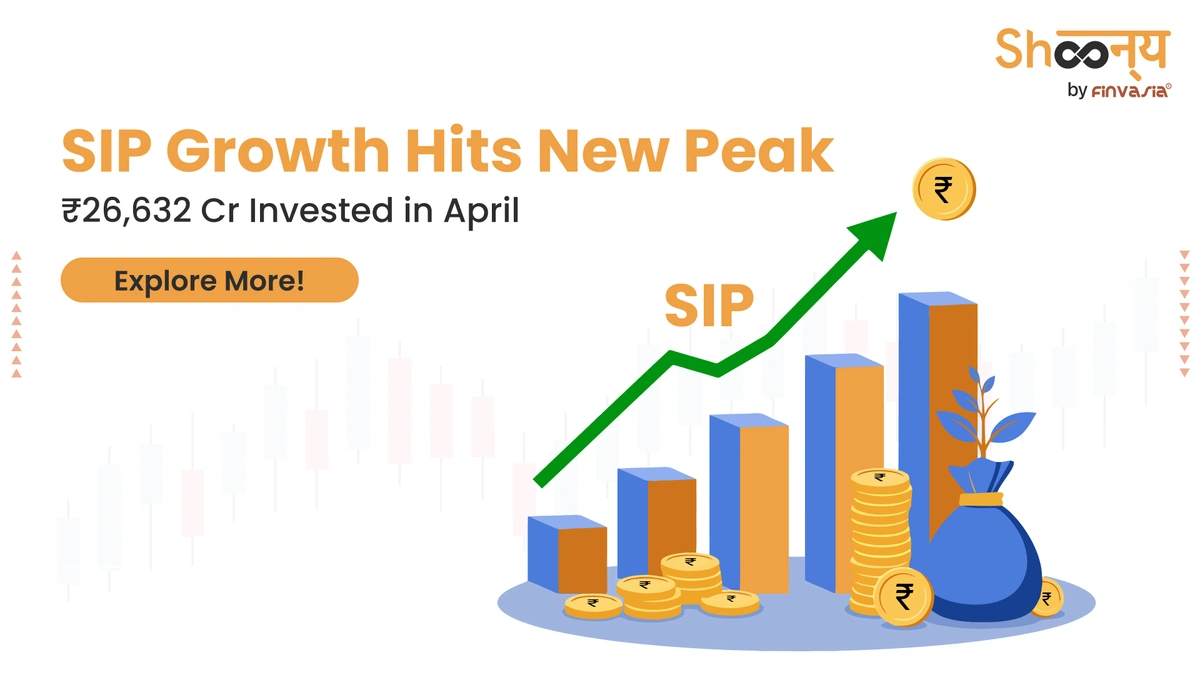SIP Inflows into Mutual Funds Increase 4% to Rs 29,361 Crore in September
So, mutual fund SIP inflows are up again, huh? Another month, another slight surge. September saw a 4% jump, bringing the total to Rs 29,361 crore. But let’s be honest, the numbers themselves don’t tell the whole story. What’s really going on here? Why are Indians increasingly turning to Systematic Investment Plans (SIPs)? Is it just a trend, or is something more profound at play?
The “Why” Behind the Rise | Beyond the Obvious

The easy answer? Financial literacy is increasing. People are realizing the power of compounding and the potential for long-term wealth creation through mutual funds. And that’s partially true. But there’s a deeper, more nuanced reason that’s fuelling this growth. Think about it: traditional investment options like fixed deposits aren’t cutting it anymore. Inflation eats away at those returns. Real estate? Too illiquid for many. Gold? Emotionally driven, and often unpredictable.
So, what’s left? Enter mutual funds, and specifically, SIPs. They offer a relatively accessible, transparent, and regulated avenue for ordinary folks to participate in the market. But it’s not just about better returns – it’s about control. The beauty of a SIP is that you can start small – even with Rs 500 a month. This low barrier to entry makes investing less intimidating, especially for first-timers. It’s like dipping your toes in the water before diving into the deep end.
And here’s the thing: fear of missing out (FOMO) plays a role too. As more people share their success stories (or perceived success stories) online, others are drawn in. It’s a social phenomenon as much as it is a financial one.
The Behavioral Economics of SIPs | Taming the Market Beast
What fascinates me is the behavioral aspect of SIPs. They’re brilliantly designed to counter some of our worst investment impulses. Market volatile? Great! You buy more units when prices are low, averaging out your cost over time. This disciplined approach helps investors avoid the emotional rollercoaster that often leads to panic selling during market downturns.
Think of it like this: you’re automating your investment decisions. You’re taking the emotion out of the equation. You’re essentially saying, “I trust the market will go up in the long run, and I’m going to consistently invest, regardless of short-term fluctuations.” It’s a powerful strategy, and one that’s clearly resonating with Indian investors. A common mistake I see people make is trying to time the market; with SIPs, time in the market is the real advantage.
But, let me rephrase that for clarity… it is important that one assesses their risk appetite before investing. The latest data highlights a growing preference for equity schemes, but remember, higher returns often come with higher volatility.
Is This Sustainable? The Rs 29,361 Crore Question
Okay, so inflows are up. But can this growth continue indefinitely? That’s the million-dollar (or rather, the Rs 29,361 crore) question. Several factors will determine the long-term trajectory of SIP investments . The health of the Indian economy is paramount. A strong economy breeds confidence, which in turn encourages more people to invest.
Secondly, the performance of the market itself. If the markets experience a prolonged downturn, it could dampen investor sentiment and lead to a slowdown in inflows. Remember, mutual fund performance plays a crucial role.
Finally, regulatory changes and investor awareness initiatives will play a significant role. SEBI (Securities and Exchange Board of India) is actively working to protect investors and promote responsible investing. Further education and awareness campaigns can help to dispel myths and misconceptions about mutual funds, encouraging even more people to participate.
The Future of SIPs | Democratizing Wealth Creation?
What fascinates me the most is the potential for SIPs to democratize wealth creation in India. For generations, investing was seen as the domain of the wealthy elite. But SIPs are changing that. They’re empowering ordinary individuals to build wealth, one small investment at a time. The accessibility of platforms like Groww and Zerodha has certainly made online mutual fund investments easier than ever.
But there are challenges. Financial literacy remains a hurdle for many. And the risk of mis-selling (where unscrupulous advisors push unsuitable products) is ever-present. The government needs to prioritize financial planning initiatives to address such challenges.
Furthermore, with increased retail participation comes the responsibility of making informed decisions. Investors need to understand market volatility and how it impacts their investment portfolio. It is important to not get swayed by market sentiments and stick to your investment plan. This disciplined approach is key to long-term success.
Navigating the Noise | Choosing the Right Funds
With so many mutual fund schemes available, choosing the right one can feel overwhelming. Where do you even start? Well, one must start with understanding their risk appetite. What is the financial goal and what is the timeline to achieve that goal? These are important considerations. A common question that I get is – how to select mutual funds ? I suggest people look for an alignment of their goals with the fund objectives.
And as per the guidelines mentioned in the information bulletin from AMFI (Association of Mutual Funds in India), doing your research is non-negotiable. Read the scheme documents carefully. Understand the fund’s investment strategy, its expense ratio, and its past performance. Don’t just rely on the advice of friends or family. Do your own due diligence.
The one thing you absolutely must double-check before investing: the expense ratio. A seemingly small difference in expense ratio can have a significant impact on your returns over the long term. Remember, every rupee saved is a rupee earned.
So, the surge in SIP inflows is not just a number. It’s a sign of a changing India – an India where ordinary people are taking control of their financial futures. And that, my friends, is something to be excited about.
FAQ Section
What exactly is a SIP and how does it work?
A SIP (Systematic Investment Plan) is a method of investing a fixed sum of money in a mutual fund scheme at regular intervals (e.g., monthly, quarterly). It allows you to invest gradually over time, benefiting from rupee cost averaging.
What are the benefits of investing through SIPs?
SIPs offer several benefits, including disciplined investing, rupee cost averaging (buying more units when prices are low), and the power of compounding. It’s a great way to build wealth over the long term.
How much money do I need to start a SIP?
One of the best things about SIPs is that you can start with a very small amount, as low as Rs 500 per month. Some funds even allow you to start with Rs 100!
What if the market crashes? Should I stop my SIP?
Ideally, no. Market downturns can be unsettling, but stopping your SIP during a crash defeats the purpose of rupee cost averaging. In fact, you’re buying more units at lower prices, which can boost your returns when the market recovers.
How do I choose the right mutual fund SIP?
Consider your risk tolerance, investment goals, and time horizon. Research different funds, compare their performance, and read the scheme documents carefully. It is advisable to consult a financial advisor.
Are SIP investments safe?
Mutual fund investments are subject to market risk. While SIPs can help mitigate some of that risk, there’s no guarantee of returns. Always do your research and invest according to your risk appetite.













